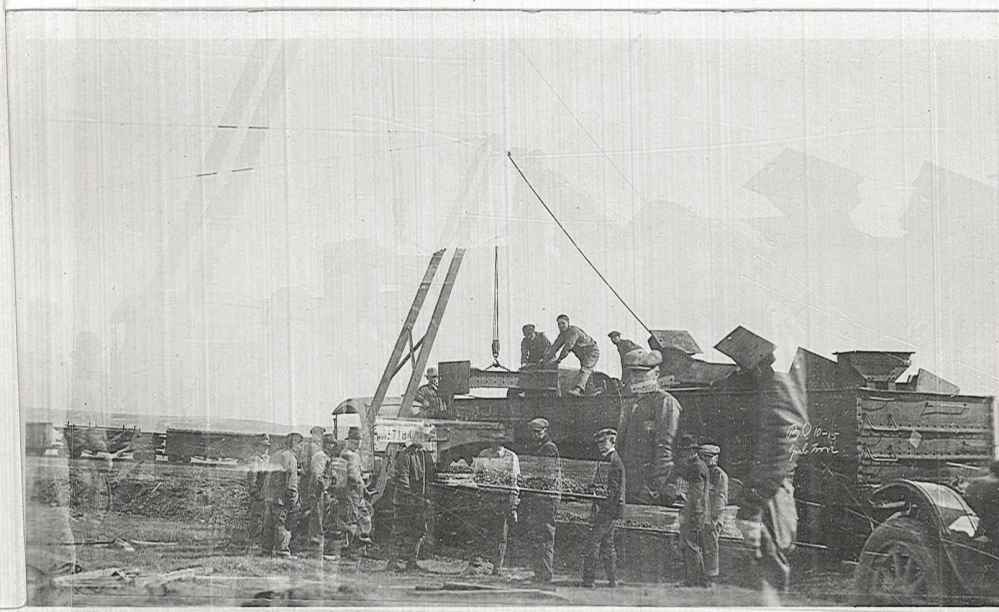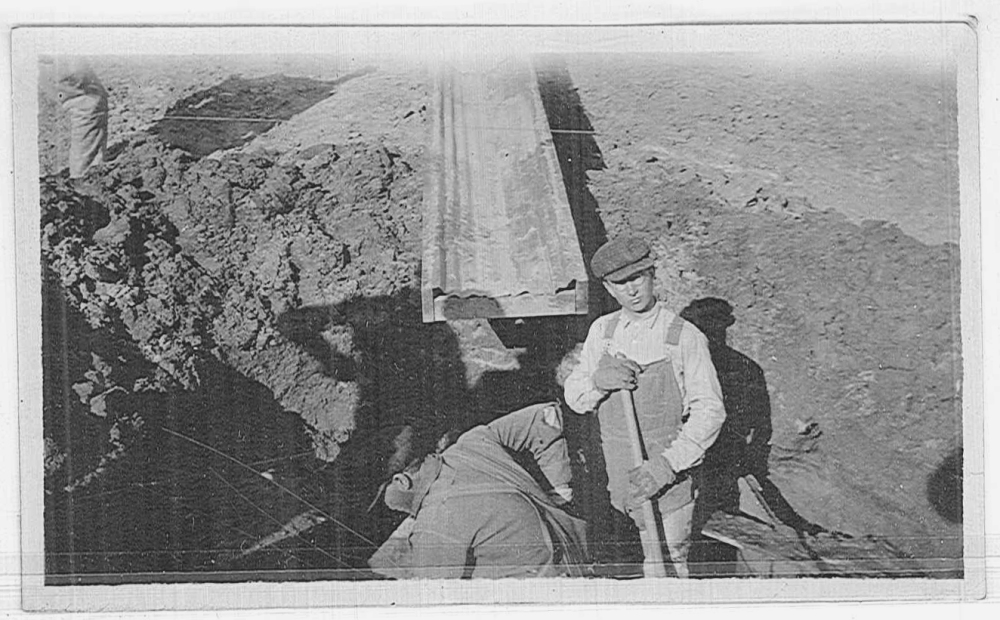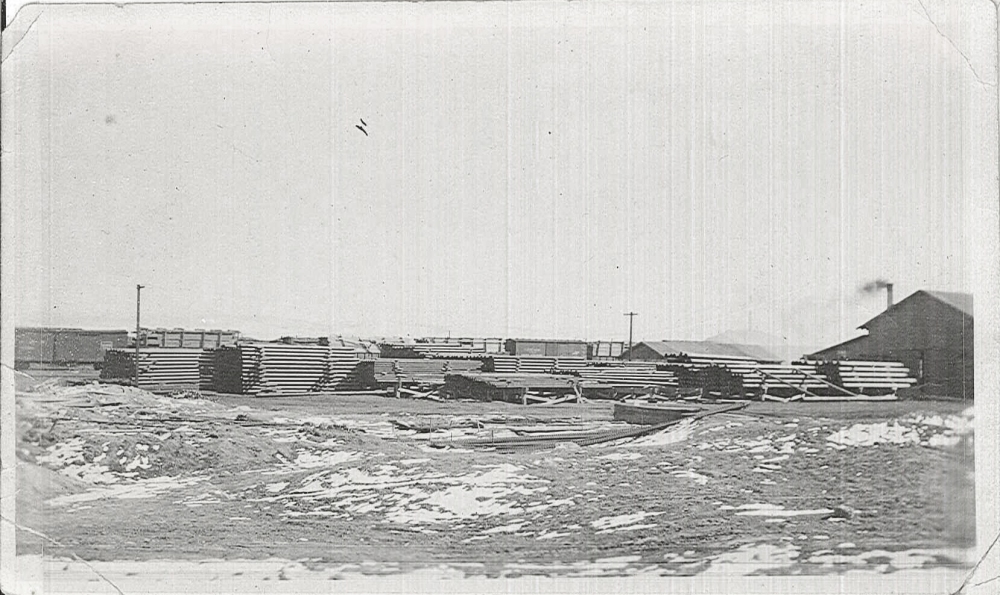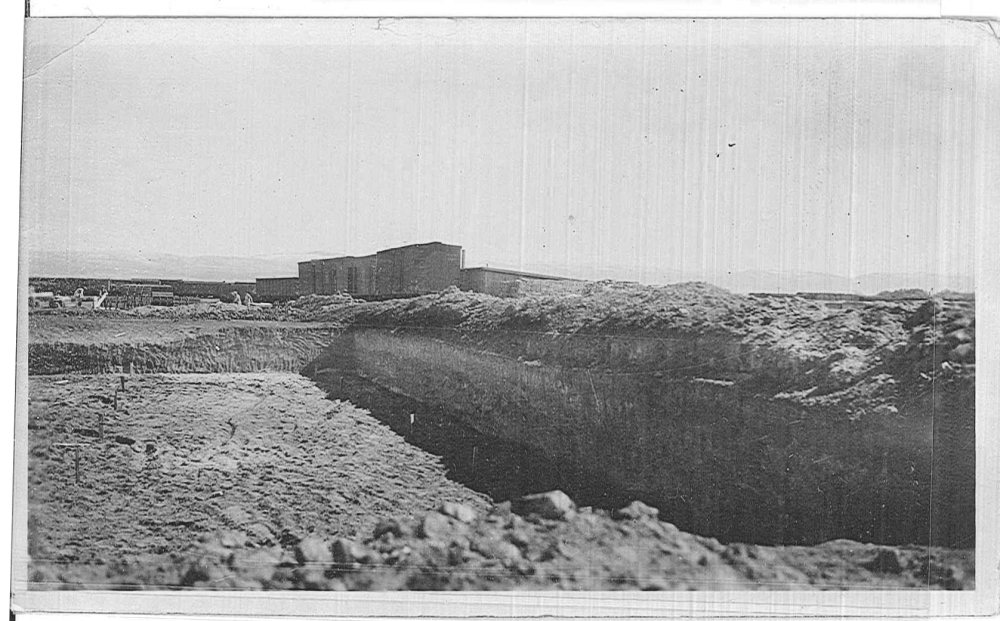The research has turned up a large number of images from this site, most having been made by the Ludwig-Svenson Studios of Laramie. However, a recent discovery has provided even more detail about the construction of the refinery itself. These were in a collection of images that was simply titled “Standard Oil Refinery, Laramie, Wyoming” With a date set of 1919-1921. More images will be added as they become available.

Pipes are laid out next to a trench. Note the rail cars in the distance and the rail line that was placed for the delivery of equipment. These rail lines would later be used to transport oil products from the site to market.

A trench has filled with water shortly after being excavated. The exact use for the pipe is unknown. Note the ditch digging machine in the background.

A group of men sit near stacks of lumber that would be used as concrete forms. Note the tanks in the background.

As was common with early photographs that were made with glass plates, one image is superimposed over another. The lumber in this image was probably used as concrete forms.

Double exposures were quite common in the early days of photography – especially with glass plates. The rail car and truck were probably the intended subjects.

The water table was found to be at five feet below the surface. This may have been an image used to provide evidence of this.

The buildings in the background were temporary construction buildings, similar to modern-day construction trailers. Note the wooden forms that are to the right side of the image.

This series of “walls” are presumably buried under the still foundations. The forms for the stills are in the background.

The forms that make up the still foundations are seen here in various stages of completion. The steel bars are made of twisted steel to provide additional support for the concrete.

The tanks were rolled up and on top of the still foundations. The foundations here are from the north still bank.
All preceding images are from the collection:
Standard Oil Refinery, Laramie, Wyoming, 1919, 1921, University of Wyoming, American Heritage Center, Wyoming-Laramie-Standard Oil Refinery photograph file.


























Pingback: How Small Towns Can Take Back Their Polluted Soils – A Case Study – Urban Ag Pulse